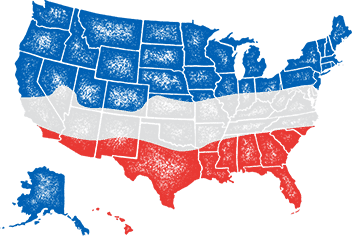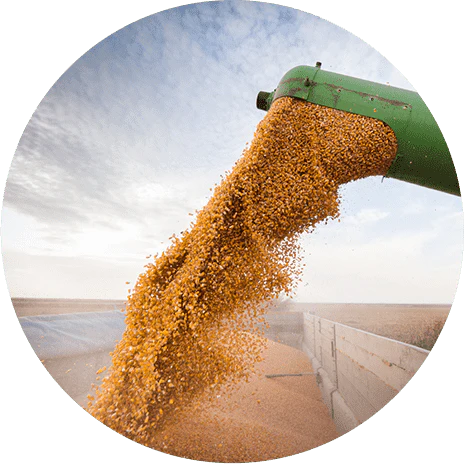
- When to plant:
- Spring, Fall
- Fertilizer:
- Varies
- Seeding rate:
- 12 lbs. per acre
- Overseeding rate:
- 8 lbs. per acre
- Seeding depth:
- 1/4 - 1/2 inch
- Ideal ph:
- 5.5 - 6.5
- Gmo:
- No
- Inoculant needed:
- No
- Coated or raw:
- Raw
- Lifecycle:
- Annual
- Climate zones:
- Cool Season, Transition Zone, Warm Season
Maris Kestral Kale is a cool season annual that is high in protein and highly digestible. Maris Kale is commonly planted for cattle, sheep, goats and deer. Maris Kale is a late season forage normally planted in the spring and harvested in the fall.
Product Information
- Application or Use: Pasture, Food Plot, Cattle Forage, Livestock Grazing
- Germination Time: 7 - 14 days, under optimal conditions
- Growing Locations: Warm Season, Transition Zone, Cool Season
- Height: 1 - 3 feet
- Sunlight Requirements: 6 - 8 hours, full sun for best results
- Advantages: Improved cold tolerance making this a perfect fit for late season forage/grazing.
- When to Plant: Recommended planting time for Northern Regions is summer when night time temperatures are consistently below 65 degrees, recommended planting time for Southern Regions is Fall, consistently below 65 degrees.
Product Detail
- Cool season annual
- High in protein
- Highly digestible
- High forage producer
- Wildlife food plots
Product Information
Maris Kestral Kale protein content ranges from 15% to 20%. The leaves are more than 90% digestible.
Well-maintained forage plots are highly productive and can produce 8 or more tons of forage per acre. This high production makes Kale and other brassicas suitable for planting on small acreage food plots for deer and other wildlife. Kale grows best in cool climates, and will benefit from a fall frost. Cold days and nights sweeten Kale while hot weather produces bitter tough leaves.
Optimal soil temperature for growing Kale is between 60 - 65 degrees. Kale does best when pH of the soil is between 5.5 and 6.5. Kale requires moderate amounts of nitrogen, phosphorus, and potassium.
*Product packaging may appear different than what is pictured.
Plant at a rate of 8 to 12 lbs per acre and a seed depth of 1/4 to 1/2 inch.
When choosing to start a new lawn, remove old vegetation by using a de-thatcher, power rake or tiller to kill the existing vegetation. Rake or drag the area to remove debris and dead grass for a clean area. Ensure the soil is leveled and loosened to allow the seed to have good soil contact once spread on a clean seed bed.
If you have an area with heavy weed coverage, we recommend starting fresh by killing and removing the existing vegetation. If you choose to use chemicals, herbicides or fertilizers, you must check with the product's manufacturer prior to planting new seed to ensure the proper waiting period.
When overseeding an existing area, mow your lawn at the lowest setting and bag the clippingsx. Rake or drag any areas that have dead thatch or debris.

Seed Quality
Hancock Seed is dedicated to delivering the best seeds possible to our customers. Hancock Seed grows and harvests many of our products, and we acquire the majority of the rest from other family farmers.
All these seeds are processed, packaged and shipped from Hancock Farm. This helps us ensure that our high standards are met. Unlike much of the competition, we refuse to sell you a seed that was not gathered during the last harvest. You will always receive fresh product from Hancock.
Every seed we grow comes with 40 years of experience behind it...you can rest assured that all of our products are cultivated in a method that assures its potential for growth.

Your cart ( 0 )

Maris Kestral Kale is a cool season annual that is high in protein and highly digestible. Maris Kale is commonly planted for cattle, sheep, goats and deer. Maris Kale is a late season forage normally planted in the spring and harvested in the fall.
Product Information
- Application or Use: Pasture, Food Plot, Cattle Forage, Livestock Grazing
- Germination Time: 7 - 14 days, under optimal conditions
- Growing Locations: Warm Season, Transition Zone, Cool Season
- Height: 1 - 3 feet
- Sunlight Requirements: 6 - 8 hours, full sun for best results
- Advantages: Improved cold tolerance making this a perfect fit for late season forage/grazing.
- When to Plant: Recommended planting time for Northern Regions is summer when night time temperatures are consistently below 65 degrees, recommended planting time for Southern Regions is Fall, consistently below 65 degrees.
Product Detail
- Cool season annual
- High in protein
- Highly digestible
- High forage producer
- Wildlife food plots
Product Information
Maris Kestral Kale protein content ranges from 15% to 20%. The leaves are more than 90% digestible.
Well-maintained forage plots are highly productive and can produce 8 or more tons of forage per acre. This high production makes Kale and other brassicas suitable for planting on small acreage food plots for deer and other wildlife. Kale grows best in cool climates, and will benefit from a fall frost. Cold days and nights sweeten Kale while hot weather produces bitter tough leaves.
Optimal soil temperature for growing Kale is between 60 - 65 degrees. Kale does best when pH of the soil is between 5.5 and 6.5. Kale requires moderate amounts of nitrogen, phosphorus, and potassium.
*Product packaging may appear different than what is pictured.
Plant at a rate of 8 to 12 lbs per acre and a seed depth of 1/4 to 1/2 inch.
Instructions
When choosing to start a new lawn, remove old vegetation by using a de-thatcher, power rake or tiller to kill the existing vegetation. Rake or drag the area to remove debris and dead grass for a clean area. Ensure the soil is leveled and loosened to allow the seed to have good soil contact once spread on a clean seed bed.
If you have an area with heavy weed coverage, we recommend starting fresh by killing and removing the existing vegetation. If you choose to use chemicals, herbicides or fertilizers, you must check with the product's manufacturer prior to planting new seed to ensure the proper waiting period.
When overseeding an existing area, mow your lawn at the lowest setting and bag the clippingsx. Rake or drag any areas that have dead thatch or debris.
















